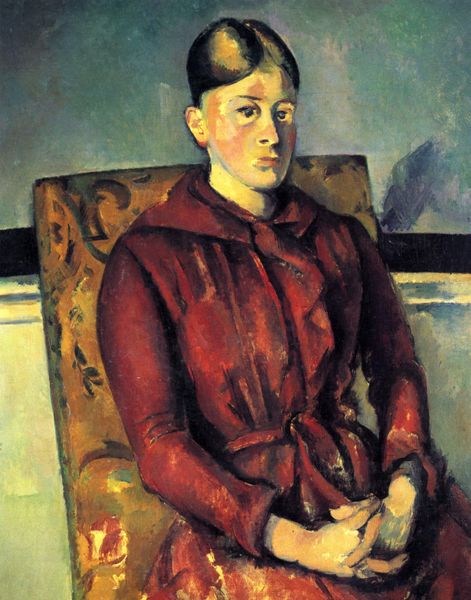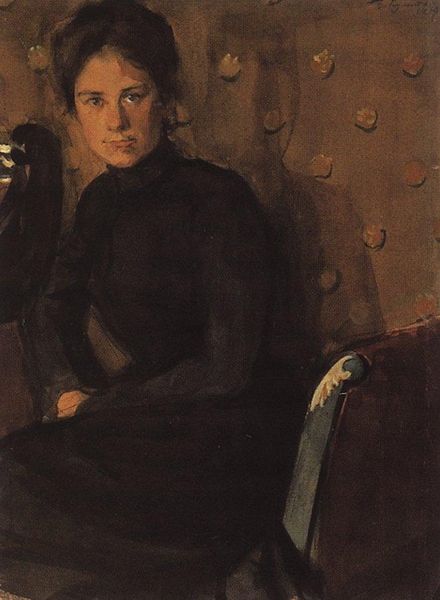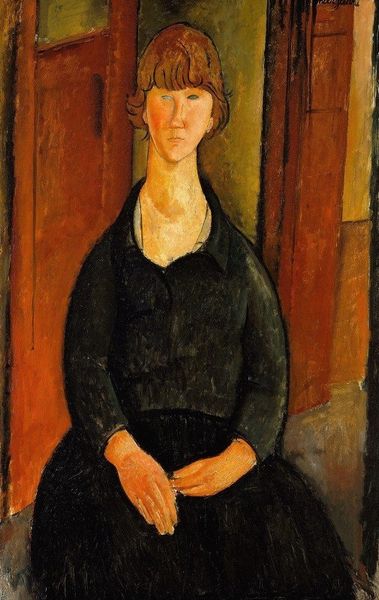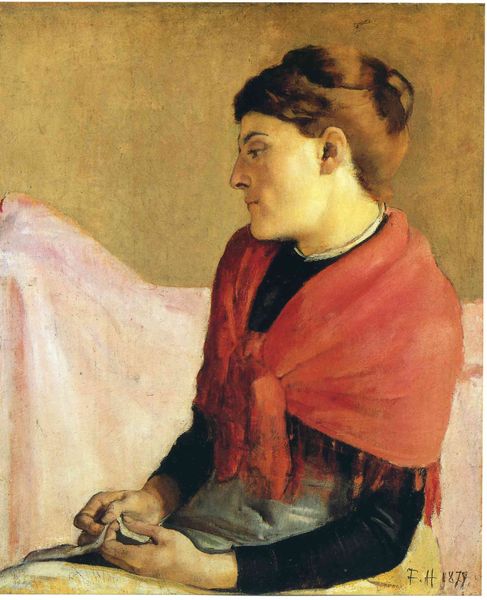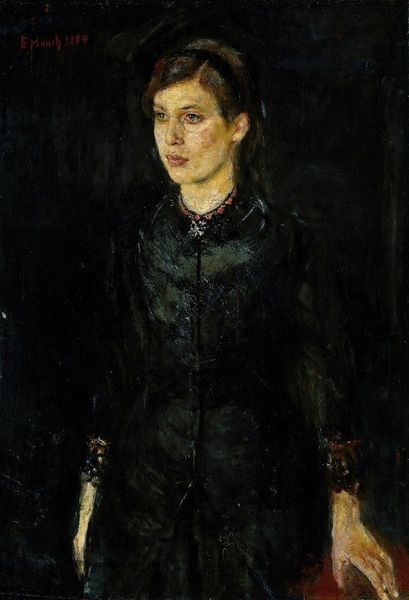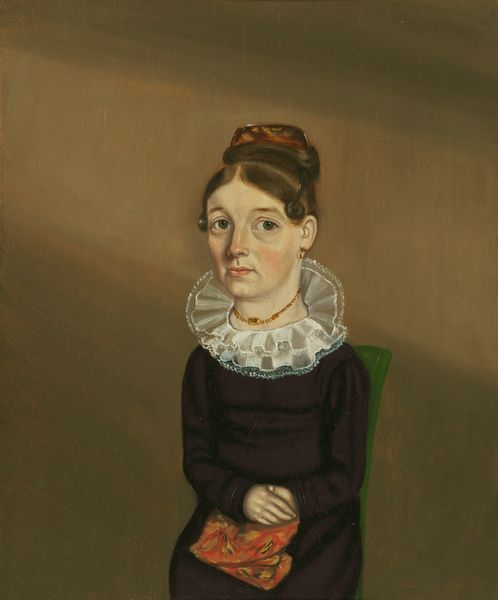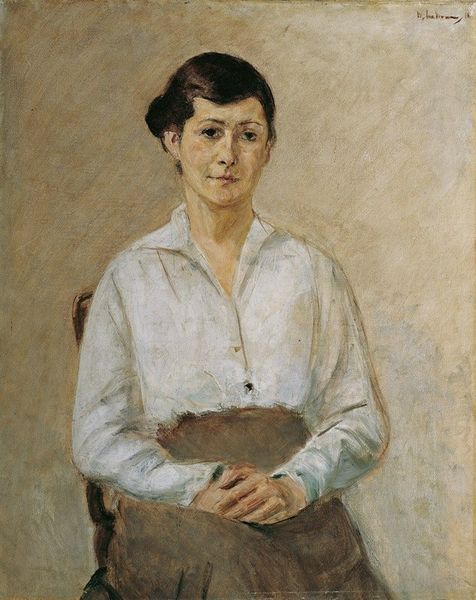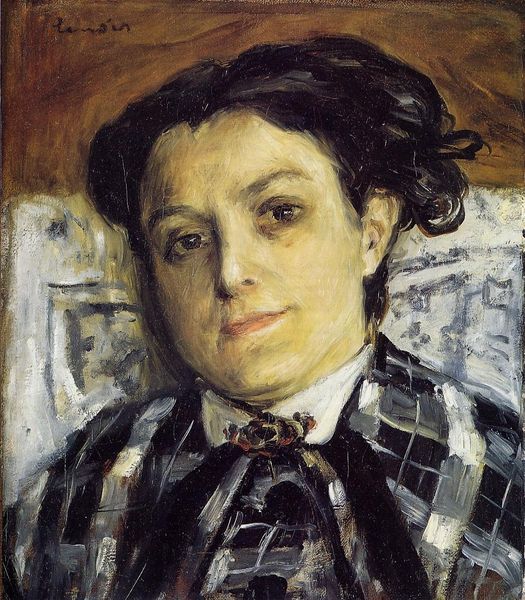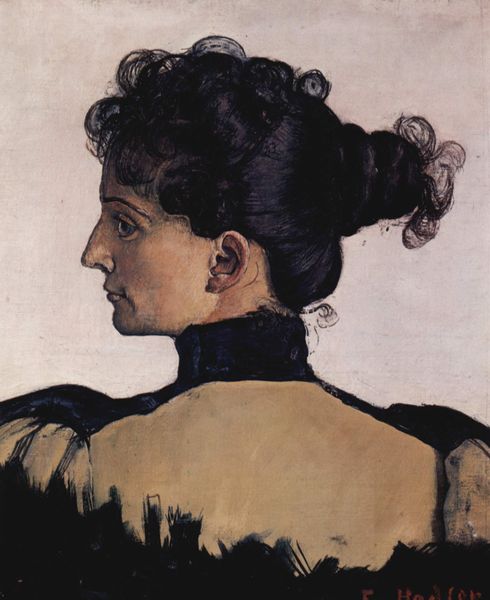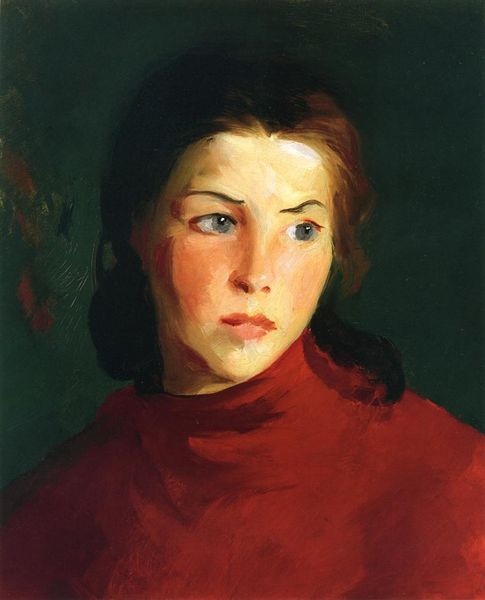
Dimensions: 55 x 46.5 cm
Copyright: Public domain
Editor: This is Ferdinand Hodler's "Portrait of Louise Delphine Duchosal," painted in 1885, using oil on canvas. It’s quite striking. Her gaze is so intense, but the colour palette feels very muted. How do you interpret this work? Curator: Hodler uses simplicity to amplify the sitter's psychological space. Notice the flower, a single white bloom – almost certainly an anemone, or windflower. Consider the symbolism of the windflower, its delicacy, and its potential fragility – perhaps hinting at themes of transience or the fleeting nature of youth. What emotional resonance does that image have for you? Editor: That’s interesting. I hadn't focused on the flower itself so much, but more as a prop in her hands. I can see that the flower contrasts the dark palette. Are there any other cultural symbols at play here? Curator: The portrait form itself carries a potent symbolic weight. Historically, portraits were often commissioned to preserve an image, commemorate status, or even transcend mortality. Here, however, there's a sense of introspective stillness, challenging conventional portraiture’s grandeur. Hodler captured more than just likeness; he evoked an atmosphere. Does the overall effect feel celebratory to you, or more melancholy? Editor: More melancholy, definitely. It makes me think of impending adulthood, or a moment of pause on life's threshold. The symbols work to create the somber tone. Curator: Yes, the single bloom underscores the precarity of youth in this symbolic portrayal. Thinking about the title alongside the visual imagery changes how one views cultural memory and psychological depth in the piece, doesn't it? Editor: It does. Paying closer attention to symbolism opens up so much more to see!
Comments
No comments
Be the first to comment and join the conversation on the ultimate creative platform.

